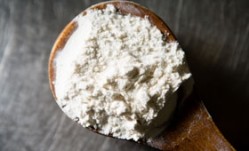Ask the Experts: How should my business handle the rise in wheat prices?

BigHospitality puts one reader's question about how their business can handle the rising price of wheat to Sharon Glancy, managing director of Stonebow, the training division of People 1st
Problem: “I am the owner of a small cafe, in a busy part of town and our popular sellers bread rolls and croissants. Our regular supplier of flour has informed us that they will be increasing their prices next month. I am loathed to increase our prices, as we may lose customers, but sooner or later it is going to start hitting our profits. What can I do?”
Solution: First and foremost, make sure that you keep wastage to a minimum as every ounce counts - so measure your flour correctly. The most common mistake made in measuring flour is to dip the measuring cup into the flour instead of lightly spooning flour into the measuring cup. This can result in up to 25 per cent more flour than a recipe calls for. For example, when measuring flour, do not shake the measuring cup holding the flour and do not pack it. Using a flat blade spatula, evenly level the flour with the top edge of the measuring cup and don't use the measuring cup to scoop the flour out of the container. Generally one cup of correctly measured flour should weigh approx 112 grams.
Next explore the different varieties of flour available from either your current supplier and from other suppliers too. From white to wheatgerm and from malted wheatgrain to stoneground, the different types of flour available today make it easy to seek cheaper alternatives. Whilst you can use alternatives, always ensure that the quality of your product does not suffer.
Look beyond wheat too. There is a wheat-free recipe for almost every wheat and gluten-based food item from bread rolls and croissants to cakes and cookies. A number of people have been diagnosed with wheat-related allergies, so a mix of wheat-based and wheat-free products will provide customers with a balanced choice and lets you differentiate your cafe from the competitors.
Finally if you have to increase the price of items, make sure that your customers want to pay more. Your service will need to stand out from the rest of the other cafes vying for your customers. For example, consider using decorative garnish to give top sellers a ‘fresh and new’ look.
To get customers coming back for more, offer new and exciting fillings for bread rolls and croissants. Consider a flavour/special of the month to coincide with special calendar events or the seasons. Customers must feel that they are getting value for money.



















